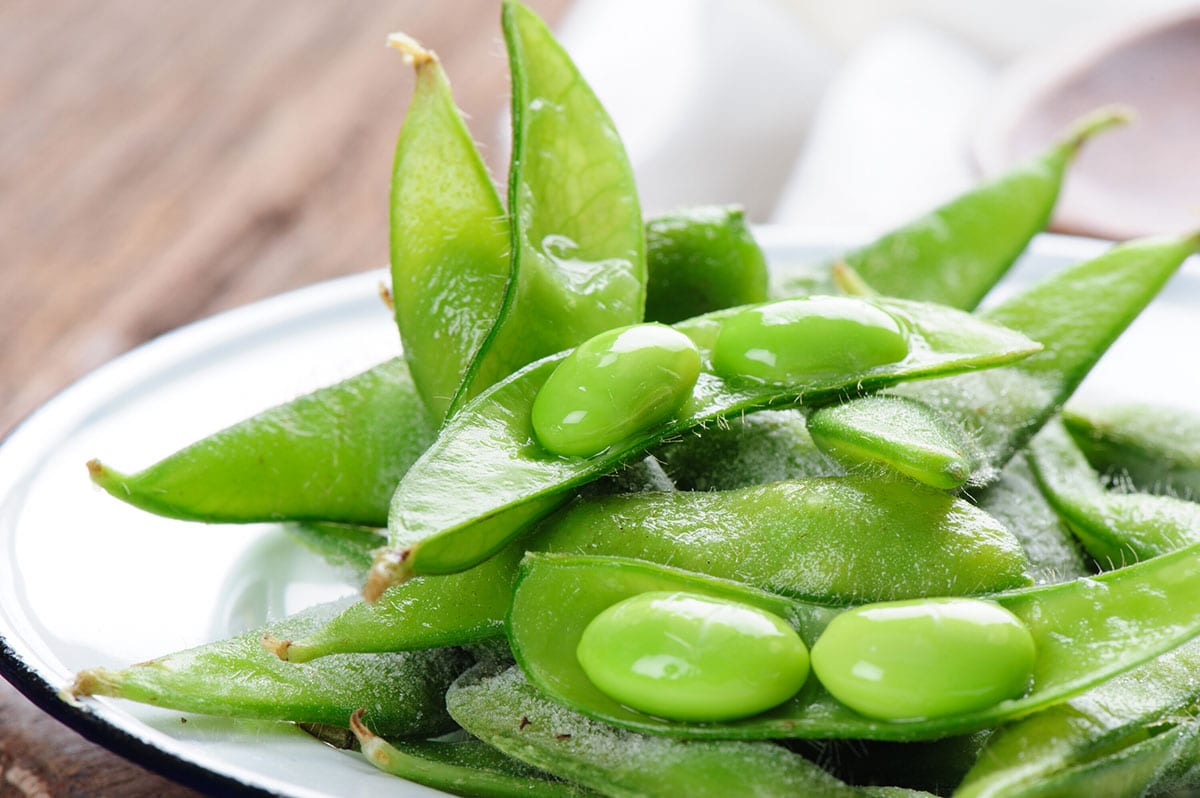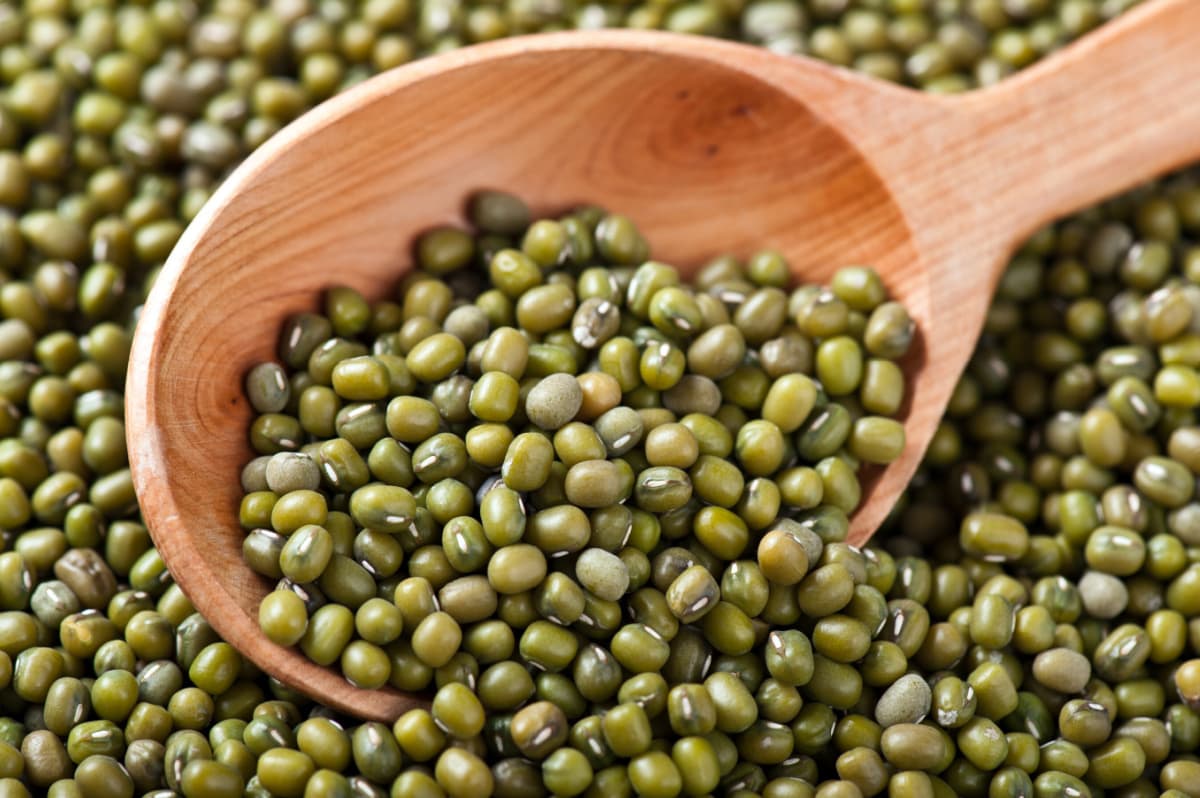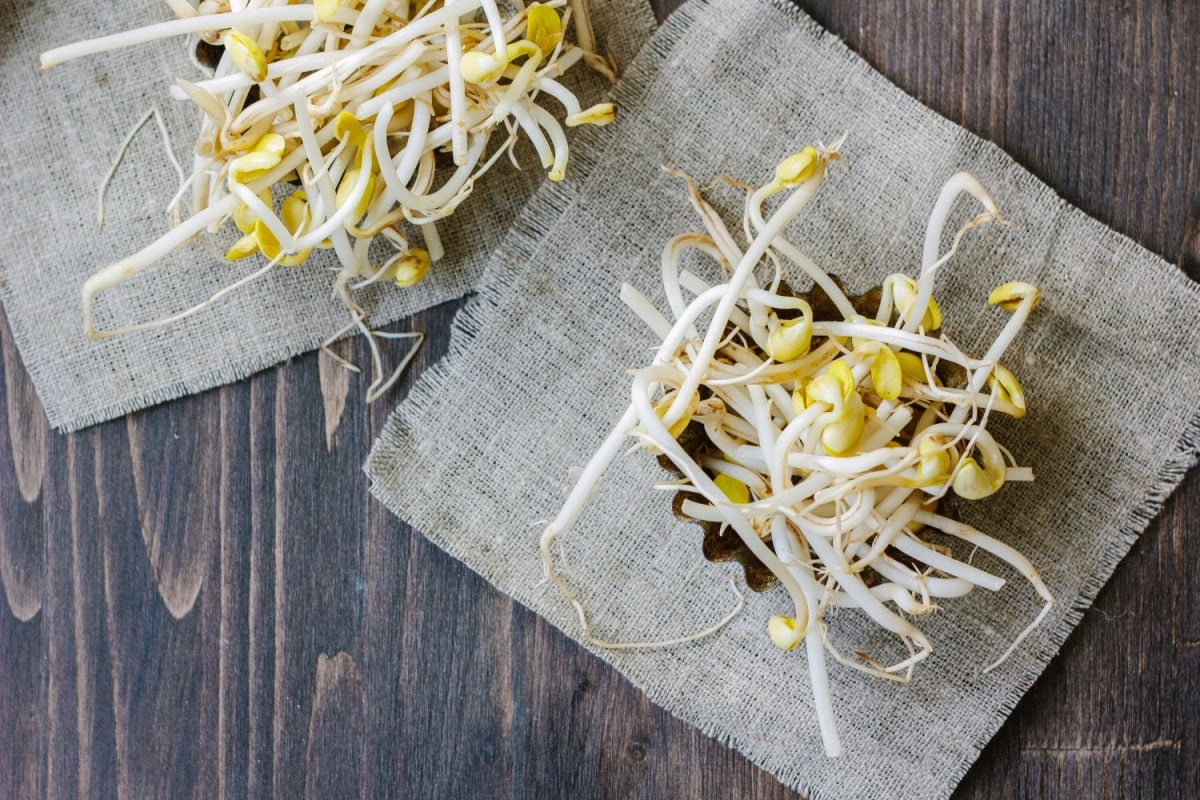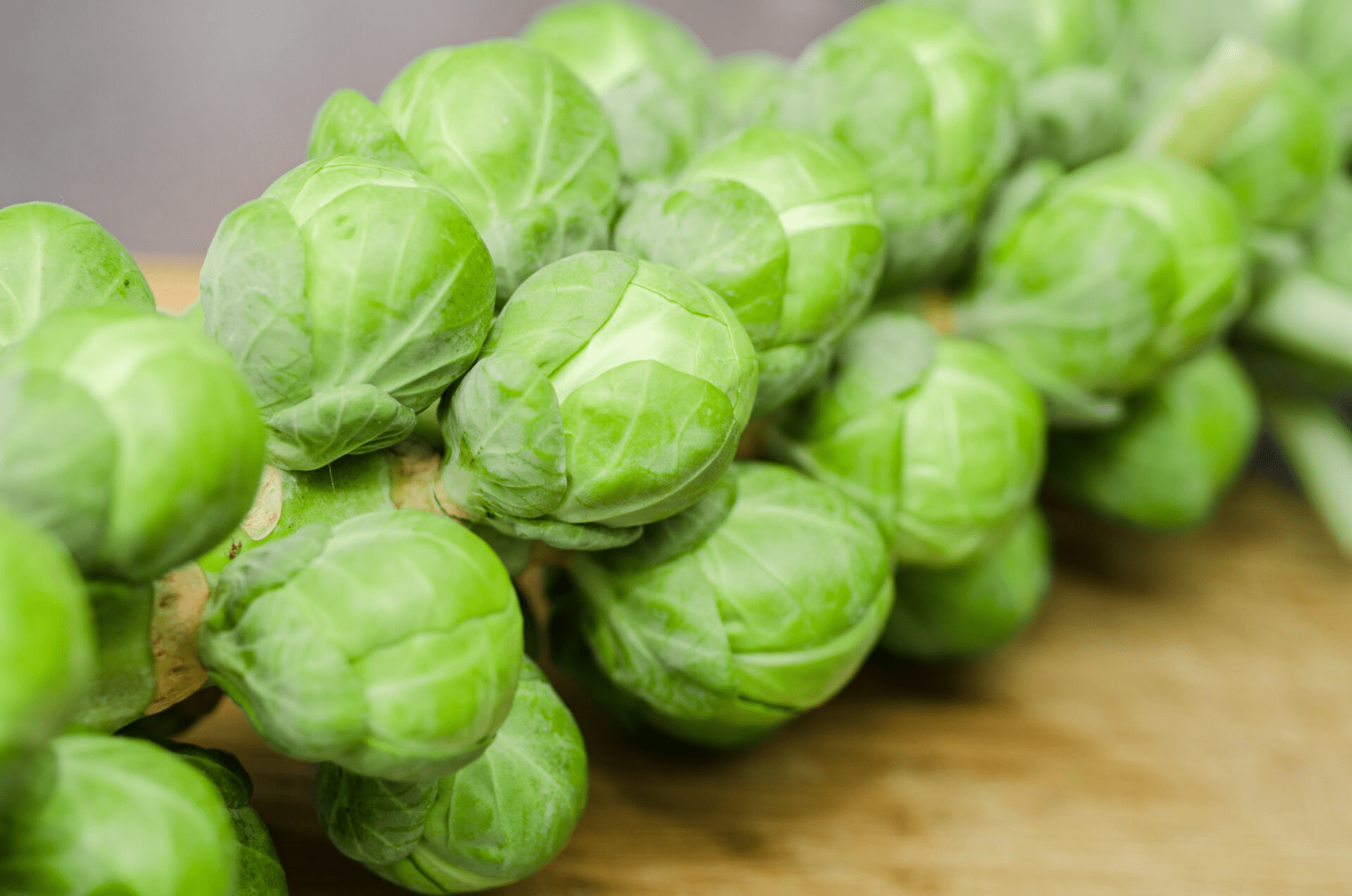20+ Vegetables With High Protein
Although most people are aware that protein is in meats and dairy, there are also plenty of plant-based foods that provide some protein. For example, have you heard of any of these vegetables with high protein?
Vegetables With High Protein
Protein is an important part of a balanced diet. Many people aren’t aware that veggies are among the finest sources. So, let’s explore some vegetables with high protein!
These vegetables, in addition to being less expensive, are often high in other vitamins that certain other foods may lack.
Although lack of protein is not a major issue in first-world countries, it can still pose a problem in some parts of the world. See Lack of Protein Symptoms for more.
For the average sedentary male, the Recommended Dietary Requirement for protein is fifty-six grams per day, and for the average woman, it is forty-six grams per day. Here are some famous vegetables:
1. Edamame:
Edamame is one of the most popular sources of protein in Asia, and it has also become increasingly popular in the West as well.
Not only does it taste great, but this type of soybean has plenty of other health benefits, including:
- It contains 8 essential amino acids
- Boost your immune system
- risk of heart disease
- Has anti-inflammatory properties
- Improves digestion
- Rich in antioxidants that help fight free radicles
- Fights cancer
Edamame is delightful to eat as a snack or tossed into soups or veggie stir-fries. Also, there are endless possibilities, such as pureeing the peas into a sauce.
1 cup of cooked edamame – 17 grams of protein.
2. Lentils:
Lentils are an excellent source of fiber, which can help maintain healthy digestion by promoting regularity and helping to curb appetite.
In addition to fiber, lentils are also a good source of potassium. This mineral is important for maintaining blood pressure and heart health and providing energy throughout the day. One cup of cooked lentils contains about 20% of the recommended daily intake of potassium.
Protein is another important nutrient found in lentils. Lentils are also a good source of iron, which can help support energy production throughout the day and improve cognitive function and blood cell health.
Besides its health benefits, lentils are pretty easy to prepare. Lentil Stew or Lentil Curry are great examples that can be made quickly because they don’t need to be soaked.
1 cup of cooked lentils – 18 grams of protein
3. Black Beans:
Black beans are a great source of protein, fiber, and other nutrients. They’re also a good source of magnesium, potassium, and folate.
In addition to being high in protein, black beans are also a good source of dietary fiber and iron.
You can eat black beans on their own, although they are extremely easy to incorporate into practically any cuisine, especially Black Bean Butternut Squash Stew and stir-fries.
- Instant Pot Black Beans
- Black Bean Quinoa Burger
- Black Bean Enchiladas
- Brazilian Black Bean Stew (Feijoada)
- Black Bean Millet Salad
1 cup of cooked black beans – 15.2 grams of protein
4. Lima Beans:
Lima beans are one of the most affordable and widely available legumes on the market, so they’re a great choice if you’re looking to add more protein to your diet or just trying to incorporate more vegetables into your everyday meals.
They can be used in a variety of recipes, including soups and stews, as well as salads and side dishes.
1 cup of lima beans – 14.6 grams of protein
5. Chickpeas:
Chickpeas are a nutrient-rich food that can be used in a variety of dishes. They are a good source of protein and fiber, which can help to keep you feeling fuller longer.
Chickpeas are also a good source of antioxidants, which can help protect your cells from damage.
To prepare chickpeas, you will need to wash them well and soak them in water for at least six hours or overnight before boiling them.
Once they are cooked, you can either eat them straight from the pan or use them in recipes. Chickpeas can be transformed into virtually anything from Chickpea Stew, or Baked Falafel, to Chickpea Biryani.
They’re particularly tasty when eaten whole or in soups, but can be used to make creations such as Chickpea Tacos, Chickpea Burgers, and even Chickpea Pancakes.
1 cup of cooked chickpeas – 14.5 grams of protein
6. Mung Beans:
Mung bean protein is a healthy alternative for vegetarians. In addition to being a good source of plant-based proteins, mung beans are also high in the amino acid lysine.
Lysine is important for building muscle and can help to prevent illness. So, if you want to drop pounds and get healthier, mung bean protein is a great way to start.
L-Arginine is another amino acid that can be found in mung beans. L-Arginine is an essential amino acid that helps repair damaged muscles.
It also helps the body produce nitric oxide, which relaxes muscles and brings blood flow back to the muscle cells. L-Arginine also supports healthy blood pressure levels, which can help keep your heart and arteries healthy.
So, when you’re looking for a vegan or vegetarian protein source with tons of vitamins, minerals, and protein, try mung beans!
You can add them to your next stew, soup, or salad. Put them in a vegetable bowl with other plant-based proteins, such as broccoli and nuts, for a more filling dinner.
1 cup of cooked mung beans – 14.1 grams of protein
7. Pinto Beans:
Pinto beans are probably the most common type of beans, and have an earthy flavor with a creamy texture. The beans are smaller in size as compared to red beans, and are pinkish in color.
Pinto beans are a nutrient-dense legume, with protein, fiber, vitamins, and minerals. These nutrients may help with blood sugar regulation and heart health, among several other benefits.
Additionally, they are high in antioxidants, which may help reduce your chance of developing chronic diseases.
Pinto beans are widely used all over the world, especially in Mexico to make Refried Beans.
- Chipotle Pinto Beans
- Instant Pot Pinto Beans
- Vegan Pinto Bean Chili Cheese Fries
- Pinto Bean Soup
- Pinto Bean Dip
1 cup of cooked pinto beans – 15 grams of protein
8. Fava Beans:
Fava beans, also called wide beans, honestly ought to be a bigger part of our diet. They are great in soups, bean salads, and sometimes even dips like hummus.
These beans, like some other legumes, are high in filling protein, so you will feel full after eating them.
1 cup of cooked fava beans – 13 grams of protein
9. Soybean Sprouts:
Soybean sprouts offer crispness and protein to dishes, whether it is on the topping of Korean bibimbap or in sautéed veggies.
These vegetables are also a good source of fiber, so kids won’t get hungry between those meals or just after dinner.
If you’ve had your fill of the usual beans, sprouts are a great way to change things up without compromising protein.
1 cup of cooked soybean sprouts – 9 grams of protein
10. Peanuts:
Peanuts are actually legumes and not nuts, which means they are a type of vegetable. A 1-ounce portion has approximately eight grams of protein, making it an excellent pre-or post-workout snack.
These legumes are also simple to incorporate into surprising meals, such as protein-rich pancakes and tacos.
1 cup of cooked peanuts – 8.5 grams of protein
11. Quinoa:
If you’re looking for a versatile nutrient-rich grain, quinoa may be the perfect fit for you. Learn How To Cook Quinoa, and you will have the perfect high protein substitute for rice dishes.
Quinoa is a complete protein, containing all nine essential amino acids. It’s also high in fiber and contains almost no calories, making it a healthy option for those watching their weight. Quinoa is also an excellent source of magnesium, potassium, and fiber.
Whether you’re cooking it up as a side dish or using it to add extra nutrients to your breakfast routine, quinoa is sure to be a hit with food lovers everywhere.
- Jamaican Quinoa and Peas
- Cilantro Lime Quinoa
- Kimchi Fried Quinoa
- Jollof Quinoa
- Artichoke Quinoa Salad
- Simple Quinoa Salad
1 cup quinoa – 8.14 grams of protein
12. Almonds:
Almonds are one of the most nutritious nuts. They are packed with protein, vitamin E, healthy fats, and fiber.
Whether you use whole almonds, Almond Flour, or Almond Milk, you will enjoy its flavor and health benefits.
1/4 cup almonds – 7 grams of protein
13. Wild Rice:
Wild rice is an aquatic grain that is longer than regular rice. It also contains more protein and 3 times more fiber than regular rice.
You can use it in wild rice-specific dishes, as well as any others that incorporate rice in general, making it incredibly simple to boost the protein in just about any rice-based meal.
1 cup cooked wild rice – 6 grams of protein
14. Spinach:
Spinach provides excellent nutrient benefits, and the potential health benefits of leafy greens are extensive.
This leafy green is packed with protein, folic acid, iron, fibers, and vitamins K and C, among other nutrients. It is also simple to toss into pasta, smoothies, bowls, and salads.
1 cup spinach – 5.35 grams of protein
15. Chia:
These nutty seeds are an amazing powerhouse of nutrients, such as omega-3 fatty acids, lots of fiber, and protein.
Add soaked chia seeds to your breakfast and experience how they keep you full for longer. Make sure to stay hydrated throughout the day!
1 cup chia seeds – 4.7 grams of protein
16. Corn:
Unlike potatoes, corn is sometimes categorized as a “plant with really no redeeming features”. However, it does have lots nutritional value that makes it a great ingredient.
Corn can be eaten either as fresh, frozen, or canned corn, or processed into cornmeal. It is a good source of fiber, folate, vitamin C, and magnesium.
- Mexican Street Corn
- Gluten-Free Vegan Cornbread
- Vegan Creamed Corn
- Cornmeal Pudding
- Hot Water Cornbread
1 cup corn – 4.3 grams of protein
17. Artichokes:
Artichokes aren’t simply for dips anymore, although, to be clear, they’re still fantastic in Spinach Artichoke Dip.
The low-calorie, nutritionally veggies are great in sheets pan dinners, grilled sides, and on tops of pizzas, where they have been hidden in plain view all this long.
1 cup artichokes – 4.2 grams of protein
18. Avocado:
As one of the most popular fruit/vegetable, the avocado’s creamy, buttery flesh provides lots of antioxidants and heart-healthy fats.
Avocados are enjoyed as a butter substitute for plant-based eaters. Serve avocado in salads or on toast for an amazing treat.
- Hummus Avocado Toast
- Avocado Tofu Salad
- Creamy Cucumber Avocado Salad
- Mango Avocado Salsa
- Avocado Mousse
- Avocado Milk
1 cup avocado – 4.02 grams of protein
19. Brussel Sprouts:
These tiny green vegetables have traditionally had a bad image, but if you know how to prepare them, they can be tasty and nutritious powerhouses.
Brussels sprouts are high in nutrients and vitamin K, as well as protein.
- Maple Roasted Brussels Sprouts And Sweet Potatoes
- Vegan Cheesy Brussels Sprout Casserole
- Smashed Brussels Sprouts
- Air Fryer Roasted Brussels Sprouts
- Roasted Brussels Sprout Stalk
1 cup Brussels sprouts – 3 grams of protein
20. Asparagus:
Asparagus is a protein-rich vegetable that is packed with nutrition. It’s the foundation of innumerable plant-based meals, whether roasted, baked, or sautéed with garlic.
Asparagus is also high in folate, as well as vitamins C, A, and K.
1 cup of cooked asparagus – 2.9 grams of protein
21. Snow Peas:
Snow peas are high in protein either raw or fried, making them an excellent addition to stir-fried dishes that could use a clean, plant-based boost.
With each dish, you will also get a healthy amount of dietary fiber and vitamin C.
1 cup snow peas – 2.7 grams of protein
22. Broccoli:
Broccoli isn’t just a terrific source of dietary fiber; it is also a surprisingly good way to meet the daily protein requirement.
You also can’t go wrong with a vegetable that has been linked to cancer-fighting abilities. We like it in a stir fry, but it can also be steamed, baked, or pureed with almost anything.
1 cup broccoli – 2.6 grams of protein
23. Red Potatoes:
Red potatoes contain protein; however, they also have a lot of dietary fiber and vitamin B6, which helps with protein digestion.
These potatoes, whether baked, fried, or roasted with other vegetables, are very delicious and nutritious.
1 cup cooked potatoes – 2.4 grams of protein
24. Sweet Potatoes:
Sweet potatoes, while not as protein-dense as their siblings, are nevertheless excellent providers of the vitamin, and they go well with almost any meal, from morning smoothies to gut-friendly meals.
Beta-carotene, found in vegetables, improves healthy eyesight, skin, and immune functions.
1 cup cooked sweet potatoes – 2.1 grams of protein
Other related health articles:
- How to Eat More Vegetables
- 13 Healthiest Leafy Green Vegetables
- Best Vegetables for Diabetics
- 10+ Best Immunity Boosting Vegetables
- How to Use Food as Medicine
- How Much Fiber Per Day?
- Foods for Glowing Skin
If you enjoyed this post about Vegetables With High Protein and would love to see more, join me on Youtube, Instagram, Facebook & Twitter!
Get discounted copies of my cookbook here.
Fortunately, because of the ads on our website, readers and subscribers of Healthier Steps are sponsoring many underprivileged families.






























